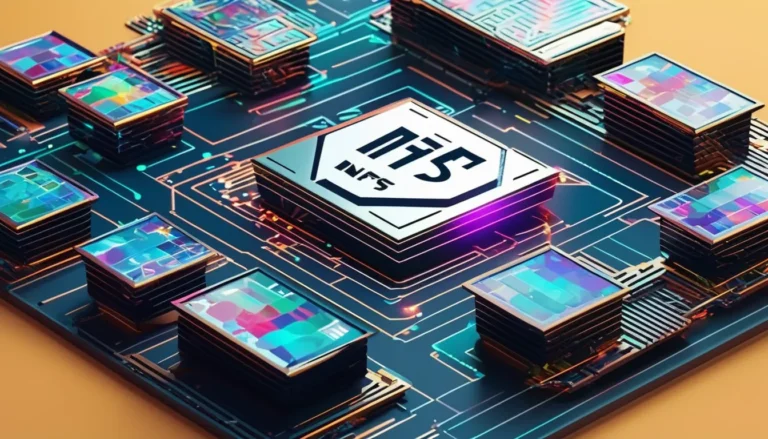Top Cryptocurrencies to Invest in for 2025: A Comprehensive Guide for U.S. Investors

Cryptocurrency investments have become an integral part of the financial landscape, offering individuals an alternative to traditional assets like stocks and bonds. With 2025 fast approaching, the crypto market continues to evolve, presenting new opportunities and risks. For U.S. investors, knowing which cryptocurrencies to focus on can make a difference between significant gains and missed opportunities. In this guide, we will explore the top cryptocurrencies to invest in for 2025, factoring in their potential for growth, technology, and market impact.
1. Bitcoin (BTC) – The King of Cryptocurrencies
Bitcoin (BTC), the original cryptocurrency, remains the most valuable and widely recognized digital asset. Launched in 2009 by the pseudonymous creator Satoshi Nakamoto, Bitcoin revolutionized the financial world by introducing a decentralized, peer-to-peer network for transferring value.
Why Bitcoin in 2025?
Despite its volatility, Bitcoin has demonstrated resilience over the years, making it a staple in most cryptocurrency portfolios. As institutional adoption increases and regulatory clarity improves, Bitcoin is positioned for long-term growth. Additionally, Bitcoin’s limited supply (21 million coins) creates scarcity, potentially driving demand in the future.
Bitcoin’s market dominance is a key indicator of its strength, often outpacing the performance of other cryptocurrencies. The ongoing development of layer 2 solutions like the Lightning Network further enhances Bitcoin’s scalability and use cases, especially for microtransactions.
For U.S. investors, Bitcoin remains a safe bet for those seeking exposure to the crypto market without excessive risk. Institutional investors, including Tesla and Square, have already shown significant interest in Bitcoin, adding to its legitimacy as a store of value.
2. Ethereum (ETH) – The Smart Contract Pioneer
Ethereum (ETH) is more than just a cryptocurrency; it’s a decentralized platform that enables developers to create and deploy smart contracts and decentralized applications (dApps). Since its launch in 2015 by Vitalik Buterin, Ethereum has been at the forefront of the crypto revolution, powering DeFi (decentralized finance) and NFTs (non-fungible tokens).
Why Ethereum in 2025?
Ethereum’s transition to Ethereum 2.0, a proof-of-stake (PoS) consensus mechanism, is expected to solve issues related to scalability, energy consumption, and high transaction fees. The network upgrade is crucial as it will allow Ethereum to handle a higher volume of transactions per second (TPS), positioning it as the backbone of Web3 and decentralized applications.
As Ethereum continues to improve, its widespread adoption in sectors like finance, gaming, and supply chain management is likely to grow. Ethereum’s ecosystem is vast, with thousands of dApps running on its network, and its smart contract capabilities make it indispensable for the evolving blockchain space.
In 2025, Ethereum’s future looks bright as it scales to support millions of users and developers, making it an essential part of any diversified crypto portfolio.
3. Solana (SOL) – The Fast and Scalable Blockchain
Solana (SOL) is a high-performance blockchain platform known for its lightning-fast transaction speeds and low fees. Launched in 2020 by Anatoly Yakovenko, Solana’s consensus mechanism, Proof of History (PoH), allows it to process over 65,000 transactions per second, making it one of the fastest blockchains in the world.
Why Solana in 2025?
Solana’s speed and scalability are its biggest selling points. As the blockchain ecosystem continues to grow, Solana’s ability to handle large-scale applications, particularly in decentralized finance (DeFi), gaming, and NFTs, positions it as a strong competitor to Ethereum. Solana has already attracted high-profile projects and developers, further cementing its place in the crypto space.
Solana’s ecosystem is expanding rapidly, with numerous decentralized applications and platforms being built on its blockchain. By 2025, Solana could emerge as a top contender for Ethereum’s crown, especially if Ethereum 2.0 fails to scale effectively.
For U.S. investors looking for a fast, scalable blockchain with a growing ecosystem, Solana offers great potential for the years ahead.
4. Cardano (ADA) – The Eco-Friendly Blockchain
Cardano (ADA), created by Charles Hoskinson (co-founder of Ethereum), is a blockchain platform that emphasizes security, scalability, and sustainability. Cardano uses a unique proof-of-stake (PoS) consensus mechanism called Ouroboros, which is designed to be energy-efficient compared to the traditional proof-of-work (PoW) system.
Why Cardano in 2025?
Cardano’s focus on building a sustainable and scalable blockchain makes it an attractive option for long-term investment. The platform is designed to support smart contracts, decentralized applications (dApps), and digital asset issuance, similar to Ethereum. However, its more energy-efficient design could attract investors who are concerned about the environmental impact of blockchain technology.
Cardano’s development is meticulous and research-driven, with a strong emphasis on peer-reviewed academic papers and formal methods. By 2025, Cardano may gain more traction in sectors like education, agriculture, and healthcare, where its emphasis on security and sustainability can be a differentiator.
For U.S. investors looking for a green and methodical blockchain project, Cardano presents an intriguing option for 2025.
5. Polkadot (DOT) – The Blockchain Interoperability Leader
Polkadot (DOT) is a next-generation blockchain platform designed to enable different blockchains to interoperate and communicate with each other. Founded by Dr. Gavin Wood, co-founder of Ethereum, Polkadot uses a unique multi-chain architecture that allows multiple blockchains to operate in parallel, exchanging information and value seamlessly.
Why Polkadot in 2025?
Polkadot’s ability to enable interoperability between blockchains could be a game-changer for the crypto industry. In an increasingly fragmented blockchain ecosystem, Polkadot allows developers to build specialized blockchains that can communicate with each other, unlocking new possibilities for decentralized finance (DeFi), data sharing, and governance.
The Polkadot ecosystem is growing rapidly, with several parachains (individual blockchains) already launched. By 2025, Polkadot could become the backbone of a truly decentralized internet, providing a crucial bridge for different blockchain networks to collaborate and scale.
For U.S. investors, Polkadot’s focus on interoperability and its expanding ecosystem make it a promising long-term investment.
6. Chainlink (LINK) – The Oracle Network
Chainlink (LINK) is a decentralized oracle network that enables smart contracts to securely interact with real-world data. Founded by Sergey Nazarov in 2017, Chainlink’s oracle technology is crucial for bringing off-chain data into blockchain-based smart contracts, powering use cases in DeFi, insurance, supply chain, and more.
Why Chainlink in 2025?
Chainlink’s importance lies in its ability to provide secure, reliable data feeds to smart contracts, making it an essential component of the growing decentralized finance ecosystem. As the DeFi market continues to expand, Chainlink’s oracle services will play a vital role in connecting blockchain applications with real-world data.
Chainlink’s network of node operators and its integration with various blockchains position it as the leader in the oracle space. With the growth of Web3 and the need for decentralized data sources, Chainlink is well-positioned for significant growth in 2025.
For U.S. investors looking to invest in a foundational technology that underpins many blockchain applications, Chainlink offers strong potential.
7. Avalanche (AVAX) – The Fast, Secure, and Scalable Blockchain
Avalanche (AVAX) is a blockchain platform designed for decentralized applications and custom blockchain networks. It boasts a unique consensus mechanism called Avalanche, which allows for faster and more secure transactions compared to traditional blockchains.
Why Avalanche in 2025?
Avalanche’s focus on scalability and interoperability has made it a rising star in the blockchain space. Its ability to create highly customizable blockchains that can interoperate with each other makes it a powerful platform for developers. Avalanche’s fast transaction finality and low fees make it a great choice for decentralized finance (DeFi) applications.
As the DeFi space continues to grow, Avalanche’s position as one of the top-performing blockchains in terms of speed and scalability positions it as a key player in the crypto ecosystem. By 2025, Avalanche could see further adoption across multiple industries, especially in areas like finance, supply chain, and gaming.
For U.S. investors looking for a fast and scalable blockchain solution, Avalanche is a top contender.
8. Litecoin (LTC) – The Digital Silver
Litecoin (LTC) was created by Charlie Lee in 2011 as a faster and more efficient alternative to Bitcoin. Often referred to as “digital silver,” Litecoin offers faster transaction times and lower fees than Bitcoin, making it a popular choice for day-to-day transactions.
Why Litecoin in 2025?
Although it’s not as dominant as Bitcoin or Ethereum, Litecoin’s low transaction costs and faster block generation times make it an attractive option for microtransactions. As the crypto industry matures, Litecoin could see increased adoption as a payment solution, especially as merchants seek alternatives to Bitcoin’s high transaction fees.
Litecoin’s longevity in the market, combined with ongoing improvements and its dedicated community, gives it the potential to remain a valuable asset in the crypto space well into 2025.
For U.S. investors seeking a tried-and-true cryptocurrency with low transaction fees, Litecoin remains a solid option.
Conclusion
As we look ahead to 2025, the cryptocurrency landscape is full of opportunities. Bitcoin and Ethereum remain the dominant players, but emerging platforms like Solana, Cardano, and Polkadot are gaining traction and offer exciting potential for growth. With new technologies, enhanced scalability, and growing institutional adoption, these cryptocurrencies could be poised for strong performance in the years ahead.
For U.S. investors, diversifying your crypto portfolio by investing in a mix of established coins like Bitcoin and Ethereum, along with promising projects like Solana and Chainlink, can help mitigate risk while maximizing long-term growth potential. Always remember that cryptocurrency investments carry risks due to their volatility, so it’s essential to do thorough research and consider your risk tolerance before making investment decisions.




